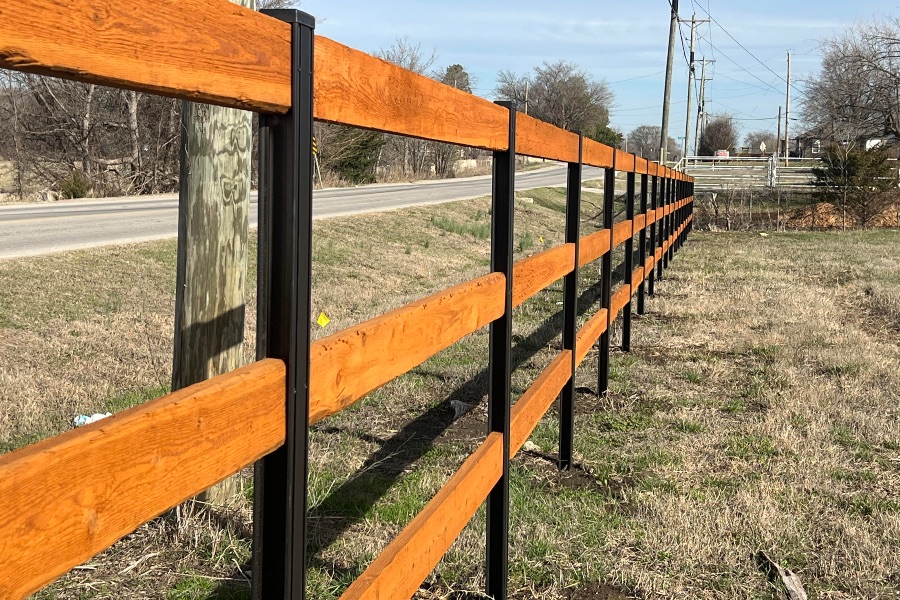All Categories
Featured

Acknowledging the signs that your fencing requires to be changed can assist you avoid additional damage and maintain the security and look of your home. Here are some vital indicators that it's time to change your fence.

- Noticeable Damage or Deterioration
One of one of the most apparent signs that your fencing requires to be replaced shows up damage. Whether it's from weathering, accidents, or parasites, any major fractures, splintering, or missing out on boards can considerably minimize the architectural integrity of your fencing. If the damage is extensive and exceeds just a few fixings, replacing the entire fencing might be more cost-effective over time.
- Leaning or Sagging
A sagging or leaning fence is a clear indication of a trouble. Even if the fencing appears to be leaning slightly, it can be a sign of underlying architectural issues that can get worse with time.
- Worn Out or rotting Wood

Wood fences are specifically vulnerable to rot and decay, especially in locations that experience high degrees of dampness or moisture. If you notice that parts of your wood fencing are soft, blemished, or have visible mold and mildew, these are all indicators of rot.
- Rust and Corrosion (For Metal Fencings)
If you have a steel rust, fence and rust are typical signs of damage,. In time, exposure to rainfall, humidity, and snow can trigger metal fences to create corrosion places, which can spread and compromise the structure. While small rusting can occasionally be fixed, considerable rusting or deterioration may make the fencing harmful and necessitate a complete replacement. It might be time to think about replacing your steel fencing. if you discover any substantial weakening or large locations of corrosion.
- Fencing No Longer Satisfies Your Requirements
Another factor to replace your fence might be that it no more serves its desired objective. In time, your demands may transform-- perhaps you need a higher fencing for even more privacy or a stronger one for raised safety. If your fence no more fulfills your requirements or doesn't align with your existing choices, it may be time to upgrade to a new, extra practical design.
- Fading and Staining
While fading and staining are generally aesthetic problems, they can still suggest that your fencing is aging. Exposure to UV rays and harsh climate can trigger fences to shed their original shade, making them look plain and used. If the fading is considerable and you've currently tried cleaning up and tarnishing the fence, it may be time to replace it to restore the look of your home.
- Constant Fixings
If you discover yourself continuously repairing your fence, maybe a sign that the fencing is nearing completion of its life expectancy. While small repair services can extend the life of a fence, frequent repairs may show that the framework is no more stable. In this case, it might be a lot more cost-efficient to change the whole fence instead of remaining to buy repairs.
Final Thought
Replacing a fence is a substantial financial investment, yet it is important for keeping the personal privacy, safety, and aesthetic appeal of your property. If your fencing is showing signs of damage, rot, leaning, or various other architectural concerns, it's vital to assess whether a substitute is essential. By identifying these caution indications early on, you can make educated decisions about when to change your fence, ensuring your property continues to be protected and aesthetically appealing for several years ahead.
Latest Posts
Find Top Car Repair Care offered by Montclare Auto Repair – Drive with Confidence
Published May 24, 25
1 min read
Uncover Montclare Auto Repair’s Premier Auto Repairs and Why Drivers Trust Them
Published May 21, 25
1 min read
Discover the Greatest Auto Repair Deals in Montclare, Chicago
Published May 20, 25
1 min read
More
Latest Posts
Find Top Car Repair Care offered by Montclare Auto Repair – Drive with Confidence
Published May 24, 25
1 min read
Uncover Montclare Auto Repair’s Premier Auto Repairs and Why Drivers Trust Them
Published May 21, 25
1 min read
Discover the Greatest Auto Repair Deals in Montclare, Chicago
Published May 20, 25
1 min read